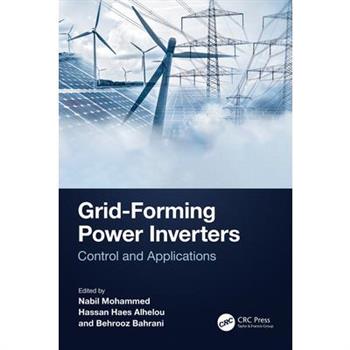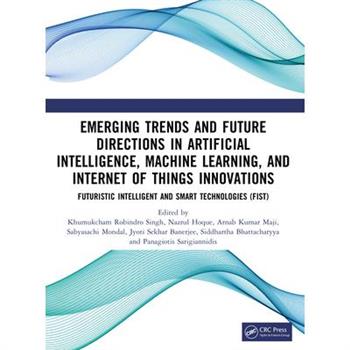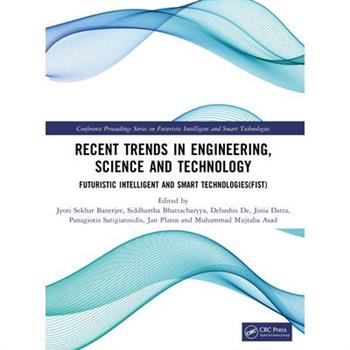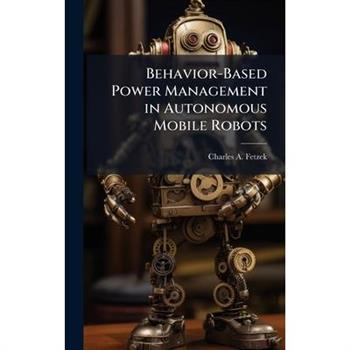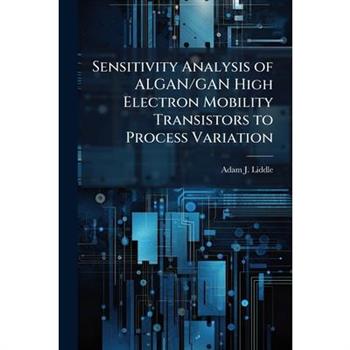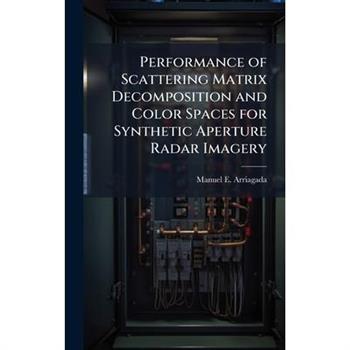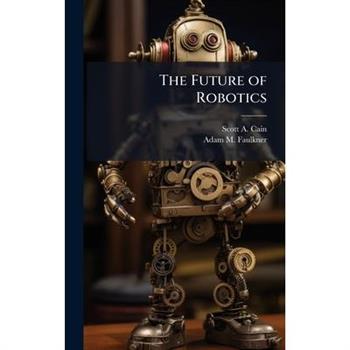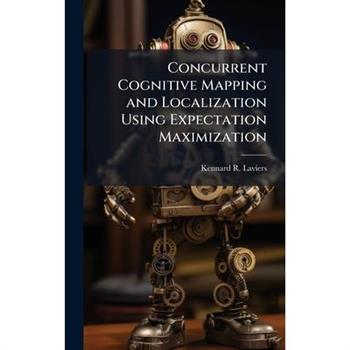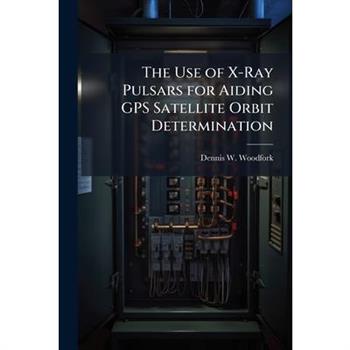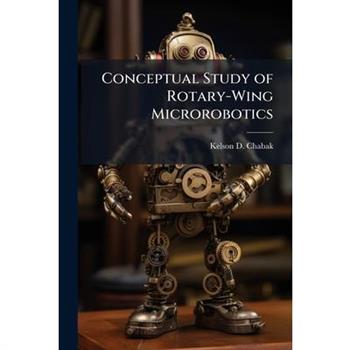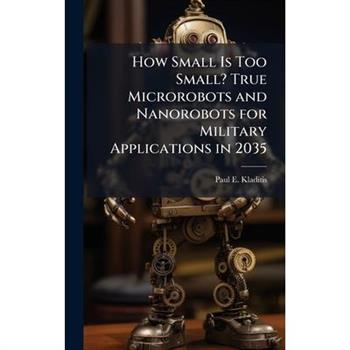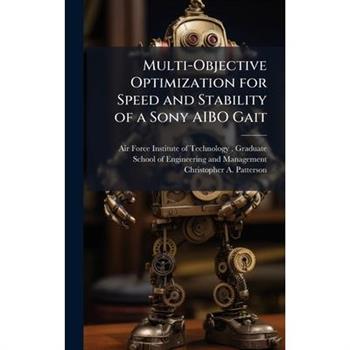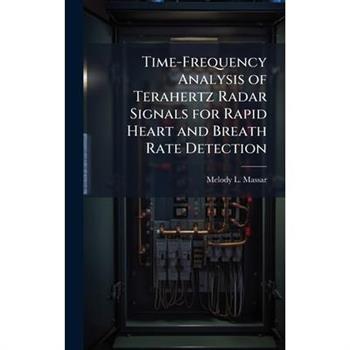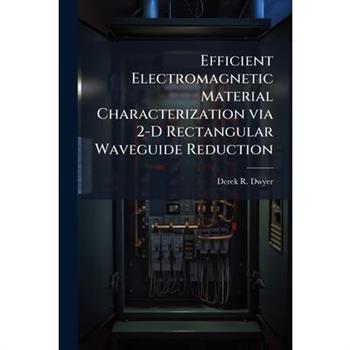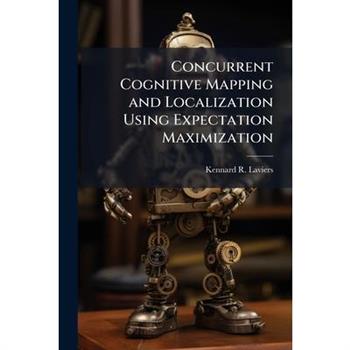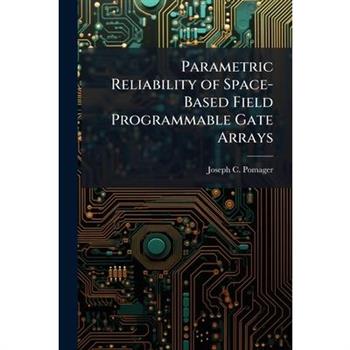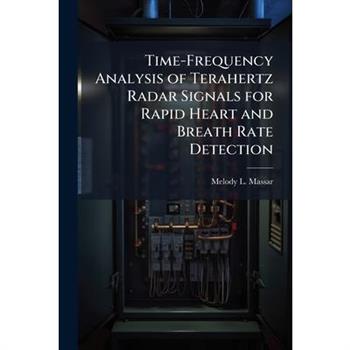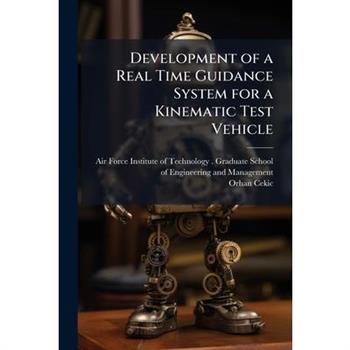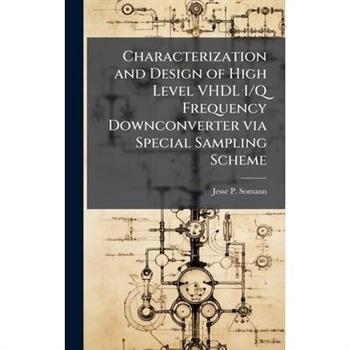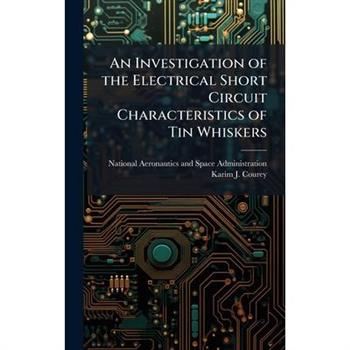Grid-Forming Power Inverters
Grid-Forming Power Inverters: Control and Applications" is the first book dedicated to address the operation principles, grid codes, modelling and control of grid-forming power inverters.
Emerging Trends and Future Directions in Artificial Intelligence, Machine Learning, and Internet of Things Innovations
The "North East India AI Summit: Unravelling Trends (NEIAIS 2025)" served as a vibrant platform for the exchange of cutting-edge ideas and research in the field of Artificial Intelligence
Basics of Digital Electronics
This book contains short definitions and descriptions followed by examination material for Digital Electronics.
Recent Trends in Engineering, Science and Technology
AIEST is a leading conference focused on providing a platform to researchers, scholars, engineers, scientists and industrial professionals.
Radiation Effects on the Electrical Properties of Hafnium Oxide Based MOS Capacitors
Hafnium oxide-based MOS capacitors were investigated to determine electrical property response to radiation environments. In situ capacitance versus voltage measurements were analyzed to identify voltage shifting as a result of changes to trapped charge with increasing dose of gamma, neutron, and ion radiation. In situ measurements required investigation and optimization of capacitor fabrication to include dicing, cleaning, metalization, packaging, and wire bonding. A top metal contact of 200 angstroms of titanium followed by 2800 angstroms of gold allowed for repeatable wire bonding and proper electrical response. Gamma and ion irradiations of atomic layer deposited hafnium oxide on silicon devices both resulted in a midgap voltage shift of no more than 0.2 V toward less positive voltages. This shift indicates recombination of radiation induced positive charge with negative trapped charge in the bulk oxide. Silicon ion irradiation caused interface effects in addition to oxide trap effects that resulted in a flatband voltage shift of approximately 0.6 V also toward less positive voltages. Additionally, no bias dependent voltage shifts with gamma irradiation and strong oxide capacitance room temperature annealing after ion irradiation was observed. These characteristics, in addition to the small voltage shifts observed, demonstrate the radiation hardness of hafnium oxide and its applicability for use in space systems.This work has been selected by scholars as being culturally important, and is part of the knowledge base of civilization as we know it. This work was reproduced from the original artifact, and remains as true to the original work as possible. Therefore, you will see the original copyright references, library stamps (as most of these works have been housed in our most important libraries around the world), and other notations in the work.This work is in the public domain in the United States of America, and possibly other nations. Within the United States, you may freely copy and distribute this work, as no entity (individual or corporate) has a copyright on the body of the work.As a reproduction of a historical artifact, this work may contain missing or blurred pages, poor pictures, errant marks, etc. Scholars believe, and we concur, that this work is important enough to be preserved, reproduced, and made generally available to the public. We appreciate your support of the preservation process, and thank you for being an important part of keeping this knowledge alive and relevant.
Microdot
As satellites become more complex, the on-board processing capabilities must keep up. Many satellites are an integrated collection of sensors and actuators with many requiring dedicated real-time control to operate correctly. For single processor systems, adding more sensors requires an increase in computing power and speed to provide the multi-tasking capability needed to service each sensor. Faster processors are more costly and consume more power, which can tax a satellite's power resources and may lead to shorter satellite lifetimes. Commercial-Off-The-Shelf (COTS) electronic components are usually not acceptable for satellite design because they have not been hardened against the radiation environment of space. An alternative design approach is to use a distributed network of small and low power microcontrollers designed for space to handle the computing requirements of each individual sensor and actuator. The design of microdot, a four-bit microcontroller for distributed low-end computing, is presented. The design is based on previous research completed at the Space Electronics Branch, Air Force Research Laboratory (AFRL/VSSE) at Kirtland AFB, NM, and the Air Force Institute of Technology at Wright- Patterson AFB, OH. The Microdot has 29 instructions and a 1K x 4 instruction memory. The distributed computing architecture is based on the Philips Semiconductor I2C Serial Bus Protocol. A prototype was implemented and tested using an Altera Field Programmable Gate Array (FPGA). The prototype was operable up to 9.1 MHz. The design was also targeted for fabrication using a radiation-hardened-by-design gate-array library from Mission Research Corporation. The gate-array library is designed for the TSMC 0.35 micrometer CMOS process.This work has been selected by scholars as being culturally important, and is part of the knowledge base of civilization as we know it. This work was reproduced from the original artifact, and remains as true to the original work as possible. Therefore, you will see the original copyright references, library stamps (as most of these works have been housed in our most important libraries around the world), and other notations in the work.This work is in the public domain in the United States of America, and possibly other nations. Within the United States, you may freely copy and distribute this work, as no entity (individual or corporate) has a copyright on the body of the work.As a reproduction of a historical artifact, this work may contain missing or blurred pages, poor pictures, errant marks, etc. Scholars believe, and we concur, that this work is important enough to be preserved, reproduced, and made generally available to the public. We appreciate your support of the preservation process, and thank you for being an important part of keeping this knowledge alive and relevant.
The Analysis of Sophisticated Direction of Arrival Estimation Methods in Passive Coherent Locators
In passive coherent locators (PCL) systems, noise and the precision of direction of arrival (DOA) estimation are key issues. This thesis addresses the implementation of sophisticated DOA estimation methods, in particular the multiple signal classification (MUSIC) algorithm, the conventional beam forming (CBF) algorithm, and the algebraic constant modulus algorithm (ACMA). The goal is to compare the ACMA to the MUSIC, and CBF algorithms for application to PCL. The results and analysis presented here support the use of constant modulus information, where available, as an important addition to DOA estimation. The ACMA offers many simple solutions to noise and separation related problems; at low SNR levels, it provides much more accurate estimates and yields reasonable separation performance even in the presence of challenging signals.This work has been selected by scholars as being culturally important, and is part of the knowledge base of civilization as we know it. This work was reproduced from the original artifact, and remains as true to the original work as possible. Therefore, you will see the original copyright references, library stamps (as most of these works have been housed in our most important libraries around the world), and other notations in the work.This work is in the public domain in the United States of America, and possibly other nations. Within the United States, you may freely copy and distribute this work, as no entity (individual or corporate) has a copyright on the body of the work.As a reproduction of a historical artifact, this work may contain missing or blurred pages, poor pictures, errant marks, etc. Scholars believe, and we concur, that this work is important enough to be preserved, reproduced, and made generally available to the public. We appreciate your support of the preservation process, and thank you for being an important part of keeping this knowledge alive and relevant.
Development of a Real Time Guidance System for a Kinematic Test Vehicle
Differential carrier phase GPS measurements are capable of giving centimeter-level accuracies. These accuracies have many potential applications for safety and control of various types of vehicles. For this research, a real-time guidance system is developed. The real-time guidance system can be divided into two components: hardware and software. The hardware component consists of two GPS receivers (one base, one mobile), two wireless 115Kbaud transceivers, and two laptop computers. One computer is for the reference station and other is for the mobile receiver interface and graphical display. The guided vehicle is a golf car called the Remote Sensing Autonomous Vehicle for EN (RAVEN). The research concentrated on developing real-time data processing algorithms and using these algorithms to show guidance information to the user via a graphical interface. The developed software reads the real-time GPS data using an RS-232 interface and converts it to a usable form for the data processing algorithms. The data processing algorithm compares the real-time data with the desired track and outputs the guidance information to the guidance display. Based on the information from the guidance display, the user is able to drive on the desired track. Four tests were performed to evaluate the guidance system performance and human factors under different circumstances. These tests include update rate tests, a single instrument test, varying parameter tests, and an under hood test. Tests results and user feedback show that the system performs well under most conditions.This work has been selected by scholars as being culturally important, and is part of the knowledge base of civilization as we know it. This work was reproduced from the original artifact, and remains as true to the original work as possible. Therefore, you will see the original copyright references, library stamps (as most of these works have been housed in our most important libraries around the world), and other notations in the work.This work is in the public domain in the United States of America, and possibly other nations. Within the United States, you may freely copy and distribute this work, as no entity (individual or corporate) has a copyright on the body of the work.As a reproduction of a historical artifact, this work may contain missing or blurred pages, poor pictures, errant marks, etc. Scholars believe, and we concur, that this work is important enough to be preserved, reproduced, and made generally available to the public. We appreciate your support of the preservation process, and thank you for being an important part of keeping this knowledge alive and relevant.
Behavior-Based Power Management in Autonomous Mobile Robots
Current attempts to prolong a robot's battery life focus on outdated techniques that have high overhead and are not built in to the underlying robotic architecture. In this thesis, battery life is extended through development of a behavior-based power management system, including a Markov decision process (MDP) power planner. This system examines sensors needed by the currently active behavior set and powers down those not required. Predictive power planning models the domain as an MDP problem in the Deliberator. The planner creates a power policy that accounts for current and future power requirements in stochastic domains. This provides a power plan that uses lower-power consuming devices at the start of a goal sequence in order to save power for the areas where higher-power consuming sensors are needed. Power savings are observed in two case studies: Low and high sensor intensity environments. Testing reveals that in a real life scenario involving multiple goals and multiple sensors, the robot's battery charge can be extended up to 96% longer when using this system over robots that rely on traditional power management.This work has been selected by scholars as being culturally important, and is part of the knowledge base of civilization as we know it. This work was reproduced from the original artifact, and remains as true to the original work as possible. Therefore, you will see the original copyright references, library stamps (as most of these works have been housed in our most important libraries around the world), and other notations in the work.This work is in the public domain in the United States of America, and possibly other nations. Within the United States, you may freely copy and distribute this work, as no entity (individual or corporate) has a copyright on the body of the work.As a reproduction of a historical artifact, this work may contain missing or blurred pages, poor pictures, errant marks, etc. Scholars believe, and we concur, that this work is important enough to be preserved, reproduced, and made generally available to the public. We appreciate your support of the preservation process, and thank you for being an important part of keeping this knowledge alive and relevant.
Sensitivity Analysis of ALGAN/GAN High Electron Mobility Transistors to Process Variation
A sensitivity analysis of AlGaN/GaN HEMT performance on material and process variations was performed. Aluminum mole fraction, barrier thickness, and gate length were varied 5% over nominal values to determine how sensitive simulated device performance was to changes in these 3 parameters. Simulated data was generated with the Synopsys TCAD software suite using a physics-based HEMT model. To validate model performance, simulated data was correlated with experimental data, which consisted of wafer epilayer characterization data as well as DC and small-signal RF device performance data from 1-26 GHz.Trends were observed in the experimental data due to variations in the fabrication process. Epilayer data showed cross-wafer trends in sheet resistance, barrier thickness and Al mole fraction but didn't show any discernable trends in mobility or sheet carrier concentration. Maximum output current was the only measured performance metric that showed a strong trend across the wafers.This work has been selected by scholars as being culturally important, and is part of the knowledge base of civilization as we know it. This work was reproduced from the original artifact, and remains as true to the original work as possible. Therefore, you will see the original copyright references, library stamps (as most of these works have been housed in our most important libraries around the world), and other notations in the work.This work is in the public domain in the United States of America, and possibly other nations. Within the United States, you may freely copy and distribute this work, as no entity (individual or corporate) has a copyright on the body of the work.As a reproduction of a historical artifact, this work may contain missing or blurred pages, poor pictures, errant marks, etc. Scholars believe, and we concur, that this work is important enough to be preserved, reproduced, and made generally available to the public. We appreciate your support of the preservation process, and thank you for being an important part of keeping this knowledge alive and relevant.
Bio-Inspired, Odor-Based Navigation
The ability of many insects, especially moths, to locate either food or a member of the opposite sex, by tracking a wind-borne plume of odor molecules, is an amazing reality. Numerous scenarios exist where having this capability embedded intoground-based or aerial vehicles would be invaluable. The main crux of this thesisinvestigation is the development of a navigation algorithm which gives a UAV theability to track a chemical plume to its source. Inspiration from the male moth's, in particular Manduca sexta (Tobacco Hornworm moth), ability to successfully tracka female's pheromone plume was used in the design of both 2-D and 3-D naviga-tion algorithms. The algorithms were developed to guide autonomous vehicles to asource generating an odor/chemical plume, using only the odor/chemical informationprovided by the plume.The algorithms were implemented using a variety of fuzzy controllers and adhoc engineering approaches. The fuzzy controller, critical to the success of bothalgorithms, was developed to estimate the location of a vehicle relative to the plume: coming into the plume, in the plume, exiting the plume, or out of the plume. Analysisof plume detections within a short-term memory bank provided the basis for thiscontroller.To test these algorithms, 2-D and 3-D simulation environments were developed.This work has been selected by scholars as being culturally important, and is part of the knowledge base of civilization as we know it. This work was reproduced from the original artifact, and remains as true to the original work as possible. Therefore, you will see the original copyright references, library stamps (as most of these works have been housed in our most important libraries around the world), and other notations in the work.This work is in the public domain in the United States of America, and possibly other nations. Within the United States, you may freely copy and distribute this work, as no entity (individual or corporate) has a copyright on the body of the work.As a reproduction of a historical artifact, this work may contain missing or blurred pages, poor pictures, errant marks, etc. Scholars believe, and we concur, that this work is important enough to be preserved, reproduced, and made generally available to the public. We appreciate your support of the preservation process, and thank you for being an important part of keeping this knowledge alive and relevant.
Electrostatic Discharge Properties of Irradiated Nanocomposites
Modernization in space systems requires employment of new light-weight, high performance composite materials that reduce bulk weight and increase structural integrity. This thesis explored the behavior of one such material prior to and following a 35-year simulated space radiation life-cycle. Select electrical properties of nickel nanostrandTM-carbon composites in seven configurations were characterized prior to electron irradiation via surface and bulk resistivity measurements and contact electrostatic discharge (ESD) measurements. Following irradiation at a fluence of 1016 e-/cm2 at an average energy of 500 keV, measurements were repeated and compared against pre-irradiation data. Configuration D is the best configuration tested for use as a satellite external surface material. All composite configurations tested in this research showed degradation in critical electrical properties when examined in the aggregate.This work has been selected by scholars as being culturally important, and is part of the knowledge base of civilization as we know it. This work was reproduced from the original artifact, and remains as true to the original work as possible. Therefore, you will see the original copyright references, library stamps (as most of these works have been housed in our most important libraries around the world), and other notations in the work.This work is in the public domain in the United States of America, and possibly other nations. Within the United States, you may freely copy and distribute this work, as no entity (individual or corporate) has a copyright on the body of the work.As a reproduction of a historical artifact, this work may contain missing or blurred pages, poor pictures, errant marks, etc. Scholars believe, and we concur, that this work is important enough to be preserved, reproduced, and made generally available to the public. We appreciate your support of the preservation process, and thank you for being an important part of keeping this knowledge alive and relevant.
Performance of Scattering Matrix Decomposition and Color Spaces for Synthetic Aperture Radar Imagery
Polarization decomposition techniques are applied to the polarization-dependent data to form colorful imagery that is easy for a human to interpret. Yet, the presumption is that the SAR system operates with maximum bandwidth requiring extensive processing for near- or real-time application. In this thesis, the author investigates the differences between the choices of color space when processing sparse SAR data with three scattering matrix decompositions (linear, Pauli and Krogager) to determine the best combination for accurate feature extraction. Hence, SAR imagery was computed for the combination of decomposition techniques and color spaces. This set of SAR imagery allows the reader to have an abstract idea of the differences between the combination of decomposition techniques and color spaces.This work has been selected by scholars as being culturally important, and is part of the knowledge base of civilization as we know it. This work was reproduced from the original artifact, and remains as true to the original work as possible. Therefore, you will see the original copyright references, library stamps (as most of these works have been housed in our most important libraries around the world), and other notations in the work.This work is in the public domain in the United States of America, and possibly other nations. Within the United States, you may freely copy and distribute this work, as no entity (individual or corporate) has a copyright on the body of the work.As a reproduction of a historical artifact, this work may contain missing or blurred pages, poor pictures, errant marks, etc. Scholars believe, and we concur, that this work is important enough to be preserved, reproduced, and made generally available to the public. We appreciate your support of the preservation process, and thank you for being an important part of keeping this knowledge alive and relevant.
The Future of Robotics
Intelligent, autonomous systems will undeniably be a future Department of Defense force multiplier. Arguably, these systems could provide the U.S. military a decisive technological advantage over future adversaries. The past decade has witnessed an explosion in unmanned land, air, and sea vehicles. Although certain levels of autonomy have been achieved, these systems do not possess intelligent autonomy, and they cannot react to novel situations near human levels of decision-making in complex environments. The purpose of this paper is to examine enabling technologies in the areas of artificial intelligence, neuroscience, and computing for future intelligent autonomous systems. The Defense Advanced Research Projects Agency leads many efforts in these fields and has sponsored field initiatives to advance robotics technology, such as Urban Challenge. DARPA enlists both the university system and industry in their programs. These entities are making technological advances that will evolve DoD robotics to a level comparable to human operated systems. Priority must be placed on advancements in intelligence algorithms and architectures, as well as on breakthroughs in computing systems to operate these architectures. Without proper focus and priority on these key areas, the decisive technological advantage offered by intelligent autonomous robotics will be lost or catastrophically protracted.This work has been selected by scholars as being culturally important, and is part of the knowledge base of civilization as we know it. This work was reproduced from the original artifact, and remains as true to the original work as possible. Therefore, you will see the original copyright references, library stamps (as most of these works have been housed in our most important libraries around the world), and other notations in the work.This work is in the public domain in the United States of America, and possibly other nations. Within the United States, you may freely copy and distribute this work, as no entity (individual or corporate) has a copyright on the body of the work.As a reproduction of a historical artifact, this work may contain missing or blurred pages, poor pictures, errant marks, etc. Scholars believe, and we concur, that this work is important enough to be preserved, reproduced, and made generally available to the public. We appreciate your support of the preservation process, and thank you for being an important part of keeping this knowledge alive and relevant.
Parametric Reliability of Space-Based Field Programmable Gate Arrays
The high cost of failure for microelectronic devices operating in the space environment has led to a need for an accurate characterization of a device's reliability prior to being deployed. In addition, significant cost savings can be achieved by determining this reliability prior to fabrication. High performance and flexibility requirements for many space applications have led to an integration of small feature-sized field programmable gate arrays (FPGA) into system designs. Specifically, feature sizes as small as 130, 90, and 65 nm. In this research, a characterization of the space environment is constructed specifically to address the typical conditions that can affect the performance and functionality of small feature-sized FPGAs, centered on temperature, non-ideal supply voltage, and radiation effects. A simulation technique is developed to determine the reliability of a microelectronic device prior to fabrication and deployment into the space environment. The technique is based on identifying the key elements of a circuit, simulating these key elements under each characterized condition individually, and then a comprehensive simulation of the elements under all enumerated combinations of the characterized conditions at the transistor-level using the HSPICE device simulation tool. Reliability calculations are performed based on simulation results and identified critical performance criteria. A demonstration of the technique is accomplished showing the poor reliability of non-radiation hardened small feature-sized commercial-off-the-shelf (COTS) FPGAs in four common satellite orbits around the earth. The results are then compared to an established, radiation hardened FPGA.This work has been selected by scholars as being culturally important, and is part of the knowledge base of civilization as we know it. This work was reproduced from the original artifact, and remains as true to the original work as possible. Therefore, you will see the original copyright references, library stamps (as most of these works have been housed in our most important libraries around the world), and other notations in the work.This work is in the public domain in the United States of America, and possibly other nations. Within the United States, you may freely copy and distribute this work, as no entity (individual or corporate) has a copyright on the body of the work.As a reproduction of a historical artifact, this work may contain missing or blurred pages, poor pictures, errant marks, etc. Scholars believe, and we concur, that this work is important enough to be preserved, reproduced, and made generally available to the public. We appreciate your support of the preservation process, and thank you for being an important part of keeping this knowledge alive and relevant.
Concurrent Cognitive Mapping and Localization Using Expectation Maximization
Robot mapping remains one of the most challenging problems in robot programming. Most successful methods use some form of occupancy grid for representing a mapped region. An occupancy grid is a two dimensional array in which the array cells represent (x, y) coordinates of a cartesian map. This approach becomes problematic in mapping large environments as the map quickly becomes too large for processing and storage. Rather than storing the map as an occupancy grid, our robot (equipped with ultra sonic sonars) views the world as a series of connected spaces. These spaces are initially mapped as an occupancy grid in a room-by-room fashion using a modified version of the Histogram In Motion Mapping (HIMM) algorithm extended in this thesis. ... Using this representation makes navigation and localization easier for the robot to process. The system also performs localization on the simplified cognitive version of the map using an iterative method of estimating the maximum likelihood of the robot's correct position. This is accomplished using the Expectation Maximization algorithm. Treating vector directions from the polygonal map as a Gaussian distribution, the Expectation Maximization algorithm is applied, for the first time, to find the most probable correct pose while using a cognitive mapping approach.This work has been selected by scholars as being culturally important, and is part of the knowledge base of civilization as we know it. This work was reproduced from the original artifact, and remains as true to the original work as possible. Therefore, you will see the original copyright references, library stamps (as most of these works have been housed in our most important libraries around the world), and other notations in the work.This work is in the public domain in the United States of America, and possibly other nations. Within the United States, you may freely copy and distribute this work, as no entity (individual or corporate) has a copyright on the body of the work.As a reproduction of a historical artifact, this work may contain missing or blurred pages, poor pictures, errant marks, etc. Scholars believe, and we concur, that this work is important enough to be preserved, reproduced, and made generally available to the public. We appreciate your support of the preservation process, and thank you for being an important part of keeping this knowledge alive and relevant.
Air Gap Error Compensation for Coaxial Transmission Line Method of Electromagnetic Material Characterization
This research analyzes material characterization measurements where axially symmetric air gaps exist between the sample material and the inner or outer conductor of a coaxial test fixture. Higher order fields are excited by the air gap and are not accounted for in generally used algorithms for determining the material permittivity and permeability. The result is error in the material characterization measurement. This research defines the fields within the material and air gap, assuming them to be axially symmetric. The fields are then used via the modal method to calculate theoretical scattering parameters as a function of permittivity, permeability, and frequency. A complex, two-dimensional Newton root search then iterates the permittivity and permeability for a given frequency minimizing the difference between the calculated scattering parameters and the measured scattering parameters. In this manner, the root corresponds to the permittivity and permeability of the sample. The modal method provides accurate results for non-magnetic material measurements when the material sample fills only 30% of the radial distance between the inner and outer conductor of the coaxial line. Due to the concentration of the electric field at the inner conductor, accurate results were achieved with a 29.25 mil material layer (400 mil air gap) on the inner conductor. It is shown that the modal method result converges to the material properties by using 10 modes. The modal method provides good results for high-dielectric constant magnetic material. Results for an outer gap scenario were more accurate than inner gap results.This work has been selected by scholars as being culturally important, and is part of the knowledge base of civilization as we know it. This work was reproduced from the original artifact, and remains as true to the original work as possible. Therefore, you will see the original copyright references, library stamps (as most of these works have been housed in our most important libraries around the world), and other notations in the work.This work is in the public domain in the United States of America, and possibly other nations. Within the United States, you may freely copy and distribute this work, as no entity (individual or corporate) has a copyright on the body of the work.As a reproduction of a historical artifact, this work may contain missing or blurred pages, poor pictures, errant marks, etc. Scholars believe, and we concur, that this work is important enough to be preserved, reproduced, and made generally available to the public. We appreciate your support of the preservation process, and thank you for being an important part of keeping this knowledge alive and relevant.
The Use of X-Ray Pulsars for Aiding GPS Satellite Orbit Determination
This research proposes the use of an existing signal of opportunity - namely x-ray pulsars - to improve the accuracy and robustness of the GPS satellite and clock estimation algorithm. Improvement in satellite and clock accuracy results in a direct benefit to the user. A simulation has been developed to determine the effects of using x-ray pulsar measurements on the GPS Operational Control Segment. The epoch-specific position, velocity, and clock errors of all GPS satellites in the constellation were estimated using both pseudoranges and time-difference-of-arrival (TDOA) measurements from pulsars. The primary measure of accuracy is a constellation Signal-In-Space Range Error (SISRE).This work has been selected by scholars as being culturally important, and is part of the knowledge base of civilization as we know it. This work was reproduced from the original artifact, and remains as true to the original work as possible. Therefore, you will see the original copyright references, library stamps (as most of these works have been housed in our most important libraries around the world), and other notations in the work.This work is in the public domain in the United States of America, and possibly other nations. Within the United States, you may freely copy and distribute this work, as no entity (individual or corporate) has a copyright on the body of the work.As a reproduction of a historical artifact, this work may contain missing or blurred pages, poor pictures, errant marks, etc. Scholars believe, and we concur, that this work is important enough to be preserved, reproduced, and made generally available to the public. We appreciate your support of the preservation process, and thank you for being an important part of keeping this knowledge alive and relevant.
Conceptual Study of Rotary-Wing Microrobotics
This thesis presents a novel rotary-wing micro-electro-mechanical systems (MEMS) robot design. Two MEMS wing designs were designed, fabricated and tested including one that possesses features conducive to insect level aerodynamics. Two methods for fabricating an angled wing were also attempted with photoresist and CrystalBondTM to create an angle of attack. One particular design consisted of the wing designs mounted on a gear which are driven by MEMS actuators. MEMS comb drive actuators were analyzed, simulated and tested as a feasible drive system. The comb drive resonators were also designed orthogonally which successfully rotated a gear without wings. With wings attached to the gear, orthogonal MEMS thermal actuators demonstrated wing rotation with limited success. Multi-disciplinary theoretical expressions were formulated to account for necessary mechanical force, allowable mass for lift, and electrical power requirements. The robot design did not achieve flight, but the small pieces presented in this research with minor modifications are promising for a potential complete robot design under 1 cm2 wingspan. The complete robot design would work best in a symmetrical quad-rotor configuration for simpler maneuverability and control. The military's method to gather surveillance, reconnaissance and intelligence could be transformed given a MEMS rotary-wing robot's diminutive size and multi-role capabilities.This work has been selected by scholars as being culturally important, and is part of the knowledge base of civilization as we know it. This work was reproduced from the original artifact, and remains as true to the original work as possible. Therefore, you will see the original copyright references, library stamps (as most of these works have been housed in our most important libraries around the world), and other notations in the work.This work is in the public domain in the United States of America, and possibly other nations. Within the United States, you may freely copy and distribute this work, as no entity (individual or corporate) has a copyright on the body of the work.As a reproduction of a historical artifact, this work may contain missing or blurred pages, poor pictures, errant marks, etc. Scholars believe, and we concur, that this work is important enough to be preserved, reproduced, and made generally available to the public. We appreciate your support of the preservation process, and thank you for being an important part of keeping this knowledge alive and relevant.
Electrostatic Discharge Properties of Irradiated Nanocomposites
Modernization in space systems requires employment of new light-weight, high performance composite materials that reduce bulk weight and increase structural integrity. This thesis explored the behavior of one such material prior to and following a 35-year simulated space radiation life-cycle. Select electrical properties of nickel nanostrandTM-carbon composites in seven configurations were characterized prior to electron irradiation via surface and bulk resistivity measurements and contact electrostatic discharge (ESD) measurements. Following irradiation at a fluence of 1016 e-/cm2 at an average energy of 500 keV, measurements were repeated and compared against pre-irradiation data. Configuration D is the best configuration tested for use as a satellite external surface material. All composite configurations tested in this research showed degradation in critical electrical properties when examined in the aggregate.This work has been selected by scholars as being culturally important, and is part of the knowledge base of civilization as we know it. This work was reproduced from the original artifact, and remains as true to the original work as possible. Therefore, you will see the original copyright references, library stamps (as most of these works have been housed in our most important libraries around the world), and other notations in the work.This work is in the public domain in the United States of America, and possibly other nations. Within the United States, you may freely copy and distribute this work, as no entity (individual or corporate) has a copyright on the body of the work.As a reproduction of a historical artifact, this work may contain missing or blurred pages, poor pictures, errant marks, etc. Scholars believe, and we concur, that this work is important enough to be preserved, reproduced, and made generally available to the public. We appreciate your support of the preservation process, and thank you for being an important part of keeping this knowledge alive and relevant.
Microdot
As satellites become more complex, the on-board processing capabilities must keep up. Many satellites are an integrated collection of sensors and actuators with many requiring dedicated real-time control to operate correctly. For single processor systems, adding more sensors requires an increase in computing power and speed to provide the multi-tasking capability needed to service each sensor. Faster processors are more costly and consume more power, which can tax a satellite's power resources and may lead to shorter satellite lifetimes. Commercial-Off-The-Shelf (COTS) electronic components are usually not acceptable for satellite design because they have not been hardened against the radiation environment of space. An alternative design approach is to use a distributed network of small and low power microcontrollers designed for space to handle the computing requirements of each individual sensor and actuator. The design of microdot, a four-bit microcontroller for distributed low-end computing, is presented. The design is based on previous research completed at the Space Electronics Branch, Air Force Research Laboratory (AFRL/VSSE) at Kirtland AFB, NM, and the Air Force Institute of Technology at Wright- Patterson AFB, OH. The Microdot has 29 instructions and a 1K x 4 instruction memory. The distributed computing architecture is based on the Philips Semiconductor I2C Serial Bus Protocol. A prototype was implemented and tested using an Altera Field Programmable Gate Array (FPGA). The prototype was operable up to 9.1 MHz. The design was also targeted for fabrication using a radiation-hardened-by-design gate-array library from Mission Research Corporation. The gate-array library is designed for the TSMC 0.35 micrometer CMOS process.This work has been selected by scholars as being culturally important, and is part of the knowledge base of civilization as we know it. This work was reproduced from the original artifact, and remains as true to the original work as possible. Therefore, you will see the original copyright references, library stamps (as most of these works have been housed in our most important libraries around the world), and other notations in the work.This work is in the public domain in the United States of America, and possibly other nations. Within the United States, you may freely copy and distribute this work, as no entity (individual or corporate) has a copyright on the body of the work.As a reproduction of a historical artifact, this work may contain missing or blurred pages, poor pictures, errant marks, etc. Scholars believe, and we concur, that this work is important enough to be preserved, reproduced, and made generally available to the public. We appreciate your support of the preservation process, and thank you for being an important part of keeping this knowledge alive and relevant.
How Small Is Too Small? True Microrobots and Nanorobots for Military Applications in 2035
The Department of Defense (DOD) anticipates the realization of biomimetic bird and two-inch-insect sized systems within the 2015 - 2047 time frame. Although robot systems on the order of size of one millimeter or smaller are not explicitly specified in current DOD and United States Air Force technology roadmaps, the technological aims toward this size can be clearly implied from official documents. This research assesses the likelihood of, and barriers to, the realization of true microrobots and nanorobots (defined as sub-millimeter sized robots of micrometer and nanometer proportions, respectively) that can perform in military applications by 2035. The findings of this research are that the realization of true microrobots for military applications by 2035 is unlikely except for a single case of microrobots. Furthermore, the realization of true nanorobots for military applications by 2035 is even more unlikely. Technological advancements accrued through striving towards the goals of true micro- and nanorobots are critical towards the U.S. achieving a technological edge in more realizable-sized miniature robots for military application. Additionally, these technological advancements are critical for reducing the size and payload of a host of other military systems including satellites, aircraft, weapons, C4ISR, and portable sensors. Thus, regardless of the feasibility of sub-millimeter sized robots by 2035, the U.S. should still sponsor research and development of both true microrobots and nanorobots today.This work has been selected by scholars as being culturally important, and is part of the knowledge base of civilization as we know it. This work was reproduced from the original artifact, and remains as true to the original work as possible. Therefore, you will see the original copyright references, library stamps (as most of these works have been housed in our most important libraries around the world), and other notations in the work.This work is in the public domain in the United States of America, and possibly other nations. Within the United States, you may freely copy and distribute this work, as no entity (individual or corporate) has a copyright on the body of the work.As a reproduction of a historical artifact, this work may contain missing or blurred pages, poor pictures, errant marks, etc. Scholars believe, and we concur, that this work is important enough to be preserved, reproduced, and made generally available to the public. We appreciate your support of the preservation process, and thank you for being an important part of keeping this knowledge alive and relevant.
Short Circuit Tests On A 12,000 Kw, 9,000 Volt, 25 Cycle Turbo-generator With External Reactance Coils
This technical report details short circuit tests conducted on a 12,000 kW, 9,000 Volt, 25 cycle turbo-generator equipped with external reactance coils. Authored by Rudolph Frederick Schuchardt, the document provides valuable insights into the performance and characteristics of such generators under fault conditions. The study offers detailed analysis relevant to electrical engineers and those involved in power system design and maintenance. Explore the methodologies and findings of these pivotal tests.This work has been selected by scholars as being culturally important, and is part of the knowledge base of civilization as we know it. This work was reproduced from the original artifact, and remains as true to the original work as possible. Therefore, you will see the original copyright references, library stamps (as most of these works have been housed in our most important libraries around the world), and other notations in the work.This work is in the public domain in the United States of America, and possibly other nations. Within the United States, you may freely copy and distribute this work, as no entity (individual or corporate) has a copyright on the body of the work.As a reproduction of a historical artifact, this work may contain missing or blurred pages, poor pictures, errant marks, etc. Scholars believe, and we concur, that this work is important enough to be preserved, reproduced, and made generally available to the public. We appreciate your support of the preservation process, and thank you for being an important part of keeping this knowledge alive and relevant.
Multi-Objective Optimization for Speed and Stability of a Sony AIBO Gait
As part of the RoboCup 4-legged league, many researchers have worked on increasing the walking/gait speed of Sony AIBO robots. Recently, the effort shifted from developing a quick gait, to developing a gait that also provides a stable sensing platform. However, to date, optimization of both velocity and camera stability has only occurred usinga single fitness function that incorporates the two objectives with a weighting that defines the desired tradeoff between them. However, the true nature of this tradeoff is not understood because the pareto front has never been charted, so this a priori decision is uninformed. This project applies the Nondominated Sorting Genetic Algorithm-II (NSGA-II) to find a pareto set of fast, stable gait parameters. This allows a user to select the best tradeoff between balance and speed for a given application. Three fitness functions are defined: one speed measure and two stability measures. A plot of evolved gaits shows a pareto front that indicates speed and stability are indeed conflicting goals. Interestingly, the results also show that tradeoffs also exist between different measures of stability.This work has been selected by scholars as being culturally important, and is part of the knowledge base of civilization as we know it. This work was reproduced from the original artifact, and remains as true to the original work as possible. Therefore, you will see the original copyright references, library stamps (as most of these works have been housed in our most important libraries around the world), and other notations in the work.This work is in the public domain in the United States of America, and possibly other nations. Within the United States, you may freely copy and distribute this work, as no entity (individual or corporate) has a copyright on the body of the work.As a reproduction of a historical artifact, this work may contain missing or blurred pages, poor pictures, errant marks, etc. Scholars believe, and we concur, that this work is important enough to be preserved, reproduced, and made generally available to the public. We appreciate your support of the preservation process, and thank you for being an important part of keeping this knowledge alive and relevant.
An Investigation of the Electrical Short Circuit Characteristics of Tin Whiskers
Existing risk simulations make the assumption that when a free tin whisker has bridged two adjacent exposed electrical conductors, the result is an electrical short circuit. This conservative assumption is made because shorting is a random event that has a currently unknown probability associated with it. Due to contact resistance electrical shorts may not occur at lower voltage levels. In this experiment, we study the effect of varying voltage on the breakdown of the contact resistance which leads to a short circuit. From this data we can estimate the probability of an electrical short, as a function of voltage, given that a free tin whisker has bridged two adjacent exposed electrical conductors. Also, three tin whiskers grown from the same Space Shuttle Orbiter card guide used in the aforementioned experiment were cross-sectioned and studied using a focused ion beam (FIB). The rare polycrystalline structure seen in the FIB cross section was confirmed using transmission electron microscopy (TEM). The FIB was also used to cross section two card guides to facilitate the measurement of the grain size to determine that the tin plating on the card guides had a bright finish.This work has been selected by scholars as being culturally important, and is part of the knowledge base of civilization as we know it. This work was reproduced from the original artifact, and remains as true to the original work as possible. Therefore, you will see the original copyright references, library stamps (as most of these works have been housed in our most important libraries around the world), and other notations in the work.This work is in the public domain in the United States of America, and possibly other nations. Within the United States, you may freely copy and distribute this work, as no entity (individual or corporate) has a copyright on the body of the work.As a reproduction of a historical artifact, this work may contain missing or blurred pages, poor pictures, errant marks, etc. Scholars believe, and we concur, that this work is important enough to be preserved, reproduced, and made generally available to the public. We appreciate your support of the preservation process, and thank you for being an important part of keeping this knowledge alive and relevant.
Time-Frequency Analysis of Terahertz Radar Signals for Rapid Heart and Breath Rate Detection
We develop new time-frequency analytic techniques which facilitate the detection of a person's heart and breath rates from the Doppler shift the movement of their body induces in a terahertz radar signal. One straightforward means of doing such an analysis is the following: take the spectrogram of the ridgeline of the spectrogram of the radar signal. Instead of following this approach exactly, we consider an alternate method in which the ridgeline of the radar signal's spectrogram is replaced with a signal computed from spectral centroids. By using spectral centroids, rather than the ridgeline, we produce a smooth signal that avoids traditional problems with ridgelines, such as jump discontinuities and overquantization. This new method for time-frequency analysis uses a Toeplitz matrix-based algorithm that has a fast Fourier transform-based implementation, and permits centroids of the vertical strips of the spectrogram of the radar signal to be computed without ever having to explicitly compute the spectrogram itself.This work has been selected by scholars as being culturally important, and is part of the knowledge base of civilization as we know it. This work was reproduced from the original artifact, and remains as true to the original work as possible. Therefore, you will see the original copyright references, library stamps (as most of these works have been housed in our most important libraries around the world), and other notations in the work.This work is in the public domain in the United States of America, and possibly other nations. Within the United States, you may freely copy and distribute this work, as no entity (individual or corporate) has a copyright on the body of the work.As a reproduction of a historical artifact, this work may contain missing or blurred pages, poor pictures, errant marks, etc. Scholars believe, and we concur, that this work is important enough to be preserved, reproduced, and made generally available to the public. We appreciate your support of the preservation process, and thank you for being an important part of keeping this knowledge alive and relevant.
Investigation of Frequency-Domain and Time-Domain Free-Space Material Measurements
Electromagnetic material characterization is the process of determining the complex permittivity and permeability of a test sample. The primary goal of this thesis is to develop a new two transmission material measurement method to decrease the error associated with using a reflection measurement. The transmission method uses a sample transmission measurement and a acrylic backed sample transmission mea- surement. This technique is first demonstrated in a rectangular waveguide system then extended to frequency-domain and time-domain focus arch free-space systems. Most free-space systems consist of transmit and receive spot-focusing horn lens antennas and a network analyzer (NWA). A six step procedure is used to extract the material characteristics using the NWA. The data is measured (1) using the NWA then it is frequency windowed (2) to knock down the sidelobes that appear in the time-domain after the data is transformed. Once transformed (3) to the time-domain the data is time gated (4) to eliminate multiple reflections between the antennas and sample. The data is transformed (5) back into the frequency-domain for extraction (6) of permittivity and permeability using a Nicolson-Ross-Weir (NRW) method and two transmission method. Windowing and transforming the data, steps two and three, decreases accuracy at the band edges. The use of a digital oscilloscope with a time-domain reflectometer (TDR) module should increase accuracy by removing the windowing and transforming operations.This work has been selected by scholars as being culturally important, and is part of the knowledge base of civilization as we know it. This work was reproduced from the original artifact, and remains as true to the original work as possible. Therefore, you will see the original copyright references, library stamps (as most of these works have been housed in our most important libraries around the world), and other notations in the work.This work is in the public domain in the United States of America, and possibly other nations. Within the United States, you may freely copy and distribute this work, as no entity (individual or corporate) has a copyright on the body of the work.As a reproduction of a historical artifact, this work may contain missing or blurred pages, poor pictures, errant marks, etc. Scholars believe, and we concur, that this work is important enough to be preserved, reproduced, and made generally available to the public. We appreciate your support of the preservation process, and thank you for being an important part of keeping this knowledge alive and relevant.
High Power Microwave and Ionizing Radiation Effects on CMOS Devices
Integrated circuits (ICs) are inherently complicated and made worse by increasing transistor quantity and density. This trend potentially enhances concomitant effects of high energy radiation and local or impressed electromagnetic interference (EMI). The reduced margin for signal error may counter any gain in radiation hardness from smaller device dimensions. Isolated EMI and ionizing radiation studies on circuits have been conducted extensively over the past 30 years. However, little focus has been placed on the combined effects. To investigate the effect of combined EMI and ionizing radiation, two complementary metal oxide semiconductor (CMOS) inverter technologies (CD4069 and SN74AUC1G04) were analyzed for their static performance in response to EMI and up to 146 kRad(tissue) gamma radiation. The combined EMI and gamma radiation environment, compared to the isolated effects, produced the most severe degradation in inverter performance for both device technologies.This work has been selected by scholars as being culturally important, and is part of the knowledge base of civilization as we know it. This work was reproduced from the original artifact, and remains as true to the original work as possible. Therefore, you will see the original copyright references, library stamps (as most of these works have been housed in our most important libraries around the world), and other notations in the work.This work is in the public domain in the United States of America, and possibly other nations. Within the United States, you may freely copy and distribute this work, as no entity (individual or corporate) has a copyright on the body of the work.As a reproduction of a historical artifact, this work may contain missing or blurred pages, poor pictures, errant marks, etc. Scholars believe, and we concur, that this work is important enough to be preserved, reproduced, and made generally available to the public. We appreciate your support of the preservation process, and thank you for being an important part of keeping this knowledge alive and relevant.
Efficient Electromagnetic Material Characterization via 2-D Rectangular Waveguide Reduction
A new, low-frequency, rectangular waveguide-based electromagnetic material characterization technique is developed that will reduce the test sample size in two dimensions realizing up to 50 percent reduction in sample cross-sectional area. To achieve this, custom made, reduced aperture, sample holder flanges were used that reduce the waveguide's excessive cross-sectional dimensions, resulting in reduced sample fabrication costs. Additionally, MatLab code was developed to implement the rigorously derived modal-analysis solution that accommodates induced, higher-order transverse electric and transverse magnetic modes and accurately extract the reduced test sample's constitutive parameters. Experimental results using various test samples are compared to known, full-aperture measurements for both the reduced aperture waveguide configurations to verify the theoretical analysis. A differential error analysis is also performed for each configuration in an attempt to estimate the error associated with test sample thickness, aperture dimensions, and sample placement uncertainties.This work has been selected by scholars as being culturally important, and is part of the knowledge base of civilization as we know it. This work was reproduced from the original artifact, and remains as true to the original work as possible. Therefore, you will see the original copyright references, library stamps (as most of these works have been housed in our most important libraries around the world), and other notations in the work.This work is in the public domain in the United States of America, and possibly other nations. Within the United States, you may freely copy and distribute this work, as no entity (individual or corporate) has a copyright on the body of the work.As a reproduction of a historical artifact, this work may contain missing or blurred pages, poor pictures, errant marks, etc. Scholars believe, and we concur, that this work is important enough to be preserved, reproduced, and made generally available to the public. We appreciate your support of the preservation process, and thank you for being an important part of keeping this knowledge alive and relevant.
Multi-Objective Optimization for Speed and Stability of a Sony AIBO Gait
As part of the RoboCup 4-legged league, many researchers have worked on increasing the walking/gait speed of Sony AIBO robots. Recently, the effort shifted from developing a quick gait, to developing a gait that also provides a stable sensing platform. However, to date, optimization of both velocity and camera stability has only occurred usinga single fitness function that incorporates the two objectives with a weighting that defines the desired tradeoff between them. However, the true nature of this tradeoff is not understood because the pareto front has never been charted, so this a priori decision is uninformed. This project applies the Nondominated Sorting Genetic Algorithm-II (NSGA-II) to find a pareto set of fast, stable gait parameters. This allows a user to select the best tradeoff between balance and speed for a given application. Three fitness functions are defined: one speed measure and two stability measures. A plot of evolved gaits shows a pareto front that indicates speed and stability are indeed conflicting goals. Interestingly, the results also show that tradeoffs also exist between different measures of stability.This work has been selected by scholars as being culturally important, and is part of the knowledge base of civilization as we know it. This work was reproduced from the original artifact, and remains as true to the original work as possible. Therefore, you will see the original copyright references, library stamps (as most of these works have been housed in our most important libraries around the world), and other notations in the work.This work is in the public domain in the United States of America, and possibly other nations. Within the United States, you may freely copy and distribute this work, as no entity (individual or corporate) has a copyright on the body of the work.As a reproduction of a historical artifact, this work may contain missing or blurred pages, poor pictures, errant marks, etc. Scholars believe, and we concur, that this work is important enough to be preserved, reproduced, and made generally available to the public. We appreciate your support of the preservation process, and thank you for being an important part of keeping this knowledge alive and relevant.
Behavior-Based Power Management in Autonomous Mobile Robots
Current attempts to prolong a robot's battery life focus on outdated techniques that have high overhead and are not built in to the underlying robotic architecture. In this thesis, battery life is extended through development of a behavior-based power management system, including a Markov decision process (MDP) power planner. This system examines sensors needed by the currently active behavior set and powers down those not required. Predictive power planning models the domain as an MDP problem in the Deliberator. The planner creates a power policy that accounts for current and future power requirements in stochastic domains. This provides a power plan that uses lower-power consuming devices at the start of a goal sequence in order to save power for the areas where higher-power consuming sensors are needed. Power savings are observed in two case studies: Low and high sensor intensity environments. Testing reveals that in a real life scenario involving multiple goals and multiple sensors, the robot's battery charge can be extended up to 96% longer when using this system over robots that rely on traditional power management.This work has been selected by scholars as being culturally important, and is part of the knowledge base of civilization as we know it. This work was reproduced from the original artifact, and remains as true to the original work as possible. Therefore, you will see the original copyright references, library stamps (as most of these works have been housed in our most important libraries around the world), and other notations in the work.This work is in the public domain in the United States of America, and possibly other nations. Within the United States, you may freely copy and distribute this work, as no entity (individual or corporate) has a copyright on the body of the work.As a reproduction of a historical artifact, this work may contain missing or blurred pages, poor pictures, errant marks, etc. Scholars believe, and we concur, that this work is important enough to be preserved, reproduced, and made generally available to the public. We appreciate your support of the preservation process, and thank you for being an important part of keeping this knowledge alive and relevant.
Investigating the Use of Frequency Selective Surfaces in High Power Microwave Applications
This thesis explores new territory with the theoretical investigation of the use of FSS in HPM applications. Work was performed in a simulation environment where rectangular and ring-shaped FSS elements were evaluated. Incident electric field levels of 0.5MV/m were propagated toward the FSS in a plane wave that was perpendicular to the surface. Results show that the total electric field in the apertures of the FSS can reach more than 6MV/m. This necessitates the use of high strength dielectric materials surrounding the FSS to reduce the risk of electrical breakdown. It is shown that a dielectric of only 2.5mm thick on each side of the FSS eliminates the risk of breakdown.This work has been selected by scholars as being culturally important, and is part of the knowledge base of civilization as we know it. This work was reproduced from the original artifact, and remains as true to the original work as possible. Therefore, you will see the original copyright references, library stamps (as most of these works have been housed in our most important libraries around the world), and other notations in the work.This work is in the public domain in the United States of America, and possibly other nations. Within the United States, you may freely copy and distribute this work, as no entity (individual or corporate) has a copyright on the body of the work.As a reproduction of a historical artifact, this work may contain missing or blurred pages, poor pictures, errant marks, etc. Scholars believe, and we concur, that this work is important enough to be preserved, reproduced, and made generally available to the public. We appreciate your support of the preservation process, and thank you for being an important part of keeping this knowledge alive and relevant.
The Combined Effects of Radio Frequency and Gamma Irradiation on P-Channel Mosfets
The purpose of this research was to investigate the combined effects of continuous gigahertz radio frequency signals and gamma irradiation on the threshold voltage of metal oxide semiconductor field effect transistors. The Fairchild NDS352AP, a commonly used commercial device, was irradiated by a cobalt-60 source under a +5 V bias with and without a radio frequency signal applied to the gate. The threshold voltage was measured during and after irradiation. During irradiation all devices exhibited an expected negative threshold voltage shift. The application of radio frequency to the gate resulted in a 7.2% increase in the rate of change of the threshold voltage during irradiation. When RF was applied after irradiation it produced no observable change when compared to the results of samples exposed to gamma radiation alone. Few conclusions can be drawn about the effects of radio frequency on post irradiation samples owing to the long recovery time of the samples. Before irradiation the radio frequency demonstrated a 5.95% increase drain current for a given drain to source voltage during I-V measurements. The threshold voltage also increased by 1.57%. The power of the radio frequency signal was adjusted from 1 to 14 dBm with no measurable effect.This work has been selected by scholars as being culturally important, and is part of the knowledge base of civilization as we know it. This work was reproduced from the original artifact, and remains as true to the original work as possible. Therefore, you will see the original copyright references, library stamps (as most of these works have been housed in our most important libraries around the world), and other notations in the work.This work is in the public domain in the United States of America, and possibly other nations. Within the United States, you may freely copy and distribute this work, as no entity (individual or corporate) has a copyright on the body of the work.As a reproduction of a historical artifact, this work may contain missing or blurred pages, poor pictures, errant marks, etc. Scholars believe, and we concur, that this work is important enough to be preserved, reproduced, and made generally available to the public. We appreciate your support of the preservation process, and thank you for being an important part of keeping this knowledge alive and relevant.
Concurrent Cognitive Mapping and Localization Using Expectation Maximization
Robot mapping remains one of the most challenging problems in robot programming. Most successful methods use some form of occupancy grid for representing a mapped region. An occupancy grid is a two dimensional array in which the array cells represent (x, y) coordinates of a cartesian map. This approach becomes problematic in mapping large environments as the map quickly becomes too large for processing and storage. Rather than storing the map as an occupancy grid, our robot (equipped with ultra sonic sonars) views the world as a series of connected spaces. These spaces are initially mapped as an occupancy grid in a room-by-room fashion using a modified version of the Histogram In Motion Mapping (HIMM) algorithm extended in this thesis. ... Using this representation makes navigation and localization easier for the robot to process. The system also performs localization on the simplified cognitive version of the map using an iterative method of estimating the maximum likelihood of the robot's correct position. This is accomplished using the Expectation Maximization algorithm. Treating vector directions from the polygonal map as a Gaussian distribution, the Expectation Maximization algorithm is applied, for the first time, to find the most probable correct pose while using a cognitive mapping approach.This work has been selected by scholars as being culturally important, and is part of the knowledge base of civilization as we know it. This work was reproduced from the original artifact, and remains as true to the original work as possible. Therefore, you will see the original copyright references, library stamps (as most of these works have been housed in our most important libraries around the world), and other notations in the work.This work is in the public domain in the United States of America, and possibly other nations. Within the United States, you may freely copy and distribute this work, as no entity (individual or corporate) has a copyright on the body of the work.As a reproduction of a historical artifact, this work may contain missing or blurred pages, poor pictures, errant marks, etc. Scholars believe, and we concur, that this work is important enough to be preserved, reproduced, and made generally available to the public. We appreciate your support of the preservation process, and thank you for being an important part of keeping this knowledge alive and relevant.
Combined Effects of Radio Frequency and Electron Radiation on CMOS Inverters
This research examines the measurement methodology, and the results of, the combined effects of electron and radio frequency irradiation (500kHz) on a CMOS Hex Inverter, CD4069UB. There have been many studies in recent years on the effects of electron radiation and electromagnetic interference on integrated circuits, however the combined effects have not been measured. A major obstacle for in-situ electron irradiation experiments is the over current hazard that exists to measurement equipment that comes from taking real-time, in-situ measurements. To overcome this, a test circuit was designed and built to allow for real-time in-situ measurement of the output voltage, current and the inverter power. This test circuit provides real-time measurement of the inverter's threshold voltage with respect to electron dose.This work has been selected by scholars as being culturally important, and is part of the knowledge base of civilization as we know it. This work was reproduced from the original artifact, and remains as true to the original work as possible. Therefore, you will see the original copyright references, library stamps (as most of these works have been housed in our most important libraries around the world), and other notations in the work.This work is in the public domain in the United States of America, and possibly other nations. Within the United States, you may freely copy and distribute this work, as no entity (individual or corporate) has a copyright on the body of the work.As a reproduction of a historical artifact, this work may contain missing or blurred pages, poor pictures, errant marks, etc. Scholars believe, and we concur, that this work is important enough to be preserved, reproduced, and made generally available to the public. We appreciate your support of the preservation process, and thank you for being an important part of keeping this knowledge alive and relevant.
Parametric Reliability of Space-Based Field Programmable Gate Arrays
The high cost of failure for microelectronic devices operating in the space environment has led to a need for an accurate characterization of a device's reliability prior to being deployed. In addition, significant cost savings can be achieved by determining this reliability prior to fabrication. High performance and flexibility requirements for many space applications have led to an integration of small feature-sized field programmable gate arrays (FPGA) into system designs. Specifically, feature sizes as small as 130, 90, and 65 nm. In this research, a characterization of the space environment is constructed specifically to address the typical conditions that can affect the performance and functionality of small feature-sized FPGAs, centered on temperature, non-ideal supply voltage, and radiation effects. A simulation technique is developed to determine the reliability of a microelectronic device prior to fabrication and deployment into the space environment. The technique is based on identifying the key elements of a circuit, simulating these key elements under each characterized condition individually, and then a comprehensive simulation of the elements under all enumerated combinations of the characterized conditions at the transistor-level using the HSPICE device simulation tool. Reliability calculations are performed based on simulation results and identified critical performance criteria. A demonstration of the technique is accomplished showing the poor reliability of non-radiation hardened small feature-sized commercial-off-the-shelf (COTS) FPGAs in four common satellite orbits around the earth. The results are then compared to an established, radiation hardened FPGA.This work has been selected by scholars as being culturally important, and is part of the knowledge base of civilization as we know it. This work was reproduced from the original artifact, and remains as true to the original work as possible. Therefore, you will see the original copyright references, library stamps (as most of these works have been housed in our most important libraries around the world), and other notations in the work.This work is in the public domain in the United States of America, and possibly other nations. Within the United States, you may freely copy and distribute this work, as no entity (individual or corporate) has a copyright on the body of the work.As a reproduction of a historical artifact, this work may contain missing or blurred pages, poor pictures, errant marks, etc. Scholars believe, and we concur, that this work is important enough to be preserved, reproduced, and made generally available to the public. We appreciate your support of the preservation process, and thank you for being an important part of keeping this knowledge alive and relevant.
The Future of Robotics
Intelligent, autonomous systems will undeniably be a future Department of Defense force multiplier. Arguably, these systems could provide the U.S. military a decisive technological advantage over future adversaries. The past decade has witnessed an explosion in unmanned land, air, and sea vehicles. Although certain levels of autonomy have been achieved, these systems do not possess intelligent autonomy, and they cannot react to novel situations near human levels of decision-making in complex environments. The purpose of this paper is to examine enabling technologies in the areas of artificial intelligence, neuroscience, and computing for future intelligent autonomous systems. The Defense Advanced Research Projects Agency leads many efforts in these fields and has sponsored field initiatives to advance robotics technology, such as Urban Challenge. DARPA enlists both the university system and industry in their programs. These entities are making technological advances that will evolve DoD robotics to a level comparable to human operated systems. Priority must be placed on advancements in intelligence algorithms and architectures, as well as on breakthroughs in computing systems to operate these architectures. Without proper focus and priority on these key areas, the decisive technological advantage offered by intelligent autonomous robotics will be lost or catastrophically protracted.This work has been selected by scholars as being culturally important, and is part of the knowledge base of civilization as we know it. This work was reproduced from the original artifact, and remains as true to the original work as possible. Therefore, you will see the original copyright references, library stamps (as most of these works have been housed in our most important libraries around the world), and other notations in the work.This work is in the public domain in the United States of America, and possibly other nations. Within the United States, you may freely copy and distribute this work, as no entity (individual or corporate) has a copyright on the body of the work.As a reproduction of a historical artifact, this work may contain missing or blurred pages, poor pictures, errant marks, etc. Scholars believe, and we concur, that this work is important enough to be preserved, reproduced, and made generally available to the public. We appreciate your support of the preservation process, and thank you for being an important part of keeping this knowledge alive and relevant.
Time-Frequency Analysis of Terahertz Radar Signals for Rapid Heart and Breath Rate Detection
We develop new time-frequency analytic techniques which facilitate the detection of a person's heart and breath rates from the Doppler shift the movement of their body induces in a terahertz radar signal. One straightforward means of doing such an analysis is the following: take the spectrogram of the ridgeline of the spectrogram of the radar signal. Instead of following this approach exactly, we consider an alternate method in which the ridgeline of the radar signal's spectrogram is replaced with a signal computed from spectral centroids. By using spectral centroids, rather than the ridgeline, we produce a smooth signal that avoids traditional problems with ridgelines, such as jump discontinuities and overquantization. This new method for time-frequency analysis uses a Toeplitz matrix-based algorithm that has a fast Fourier transform-based implementation, and permits centroids of the vertical strips of the spectrogram of the radar signal to be computed without ever having to explicitly compute the spectrogram itself.This work has been selected by scholars as being culturally important, and is part of the knowledge base of civilization as we know it. This work was reproduced from the original artifact, and remains as true to the original work as possible. Therefore, you will see the original copyright references, library stamps (as most of these works have been housed in our most important libraries around the world), and other notations in the work.This work is in the public domain in the United States of America, and possibly other nations. Within the United States, you may freely copy and distribute this work, as no entity (individual or corporate) has a copyright on the body of the work.As a reproduction of a historical artifact, this work may contain missing or blurred pages, poor pictures, errant marks, etc. Scholars believe, and we concur, that this work is important enough to be preserved, reproduced, and made generally available to the public. We appreciate your support of the preservation process, and thank you for being an important part of keeping this knowledge alive and relevant.
Development of a Real Time Guidance System for a Kinematic Test Vehicle
Differential carrier phase GPS measurements are capable of giving centimeter-level accuracies. These accuracies have many potential applications for safety and control of various types of vehicles. For this research, a real-time guidance system is developed. The real-time guidance system can be divided into two components: hardware and software. The hardware component consists of two GPS receivers (one base, one mobile), two wireless 115Kbaud transceivers, and two laptop computers. One computer is for the reference station and other is for the mobile receiver interface and graphical display. The guided vehicle is a golf car called the Remote Sensing Autonomous Vehicle for EN (RAVEN). The research concentrated on developing real-time data processing algorithms and using these algorithms to show guidance information to the user via a graphical interface. The developed software reads the real-time GPS data using an RS-232 interface and converts it to a usable form for the data processing algorithms. The data processing algorithm compares the real-time data with the desired track and outputs the guidance information to the guidance display. Based on the information from the guidance display, the user is able to drive on the desired track. Four tests were performed to evaluate the guidance system performance and human factors under different circumstances. These tests include update rate tests, a single instrument test, varying parameter tests, and an under hood test. Tests results and user feedback show that the system performs well under most conditions.This work has been selected by scholars as being culturally important, and is part of the knowledge base of civilization as we know it. This work was reproduced from the original artifact, and remains as true to the original work as possible. Therefore, you will see the original copyright references, library stamps (as most of these works have been housed in our most important libraries around the world), and other notations in the work.This work is in the public domain in the United States of America, and possibly other nations. Within the United States, you may freely copy and distribute this work, as no entity (individual or corporate) has a copyright on the body of the work.As a reproduction of a historical artifact, this work may contain missing or blurred pages, poor pictures, errant marks, etc. Scholars believe, and we concur, that this work is important enough to be preserved, reproduced, and made generally available to the public. We appreciate your support of the preservation process, and thank you for being an important part of keeping this knowledge alive and relevant.
Bio-Inspired, Odor-Based Navigation
The ability of many insects, especially moths, to locate either food or a member of the opposite sex, by tracking a wind-borne plume of odor molecules, is an amazing reality. Numerous scenarios exist where having this capability embedded intoground-based or aerial vehicles would be invaluable. The main crux of this thesisinvestigation is the development of a navigation algorithm which gives a UAV theability to track a chemical plume to its source. Inspiration from the male moth's, in particular Manduca sexta (Tobacco Hornworm moth), ability to successfully tracka female's pheromone plume was used in the design of both 2-D and 3-D naviga-tion algorithms. The algorithms were developed to guide autonomous vehicles to asource generating an odor/chemical plume, using only the odor/chemical informationprovided by the plume.The algorithms were implemented using a variety of fuzzy controllers and adhoc engineering approaches. The fuzzy controller, critical to the success of bothalgorithms, was developed to estimate the location of a vehicle relative to the plume: coming into the plume, in the plume, exiting the plume, or out of the plume. Analysisof plume detections within a short-term memory bank provided the basis for thiscontroller.To test these algorithms, 2-D and 3-D simulation environments were developed.This work has been selected by scholars as being culturally important, and is part of the knowledge base of civilization as we know it. This work was reproduced from the original artifact, and remains as true to the original work as possible. Therefore, you will see the original copyright references, library stamps (as most of these works have been housed in our most important libraries around the world), and other notations in the work.This work is in the public domain in the United States of America, and possibly other nations. Within the United States, you may freely copy and distribute this work, as no entity (individual or corporate) has a copyright on the body of the work.As a reproduction of a historical artifact, this work may contain missing or blurred pages, poor pictures, errant marks, etc. Scholars believe, and we concur, that this work is important enough to be preserved, reproduced, and made generally available to the public. We appreciate your support of the preservation process, and thank you for being an important part of keeping this knowledge alive and relevant.
Characterization and Design of High Level VHDL I/Q Frequency Downconverter via Special Sampling Scheme
This study explores the characterization and implementation of a Special Sampling Scheme (SSS) for In-Phase and Quad-Phase (I/Q) downconversion utilizing top-level, portable design strategies. The SSS is an under-developed signal sampling methodology that can be used with military and industry receiver systems, specifically, United States Air Force (USAF) video receiver systems. The SSS processes a digital input signal-stream sampled at a specified sampling frequency, and downconverts it into In-Phase (I) and Quad-Phase (Q) output signal-streams. Using the theory and application of the SSS, there are three main objectives that will be accomplished: characterization of the effects of input, output, and filter coefficient parameters on the I/Q imbalances using the SSS; development and verification of abstract, top-level VHDL code of the I/Q SSS for hardware implementation; and finally, development, verification, and analysis of variation between synthesizable pipelined and sequential VHDL implementations of the SSS for Field Programmable Gate Arrays (FPGA) and Application Specific Integrated Circuits (ASIC).This work has been selected by scholars as being culturally important, and is part of the knowledge base of civilization as we know it. This work was reproduced from the original artifact, and remains as true to the original work as possible. Therefore, you will see the original copyright references, library stamps (as most of these works have been housed in our most important libraries around the world), and other notations in the work.This work is in the public domain in the United States of America, and possibly other nations. Within the United States, you may freely copy and distribute this work, as no entity (individual or corporate) has a copyright on the body of the work.As a reproduction of a historical artifact, this work may contain missing or blurred pages, poor pictures, errant marks, etc. Scholars believe, and we concur, that this work is important enough to be preserved, reproduced, and made generally available to the public. We appreciate your support of the preservation process, and thank you for being an important part of keeping this knowledge alive and relevant.
An Investigation of the Electrical Short Circuit Characteristics of Tin Whiskers
Existing risk simulations make the assumption that when a free tin whisker has bridged two adjacent exposed electrical conductors, the result is an electrical short circuit. This conservative assumption is made because shorting is a random event that has a currently unknown probability associated with it. Due to contact resistance electrical shorts may not occur at lower voltage levels. In this experiment, we study the effect of varying voltage on the breakdown of the contact resistance which leads to a short circuit. From this data we can estimate the probability of an electrical short, as a function of voltage, given that a free tin whisker has bridged two adjacent exposed electrical conductors. Also, three tin whiskers grown from the same Space Shuttle Orbiter card guide used in the aforementioned experiment were cross-sectioned and studied using a focused ion beam (FIB). The rare polycrystalline structure seen in the FIB cross section was confirmed using transmission electron microscopy (TEM). The FIB was also used to cross section two card guides to facilitate the measurement of the grain size to determine that the tin plating on the card guides had a bright finish.This work has been selected by scholars as being culturally important, and is part of the knowledge base of civilization as we know it. This work was reproduced from the original artifact, and remains as true to the original work as possible. Therefore, you will see the original copyright references, library stamps (as most of these works have been housed in our most important libraries around the world), and other notations in the work.This work is in the public domain in the United States of America, and possibly other nations. Within the United States, you may freely copy and distribute this work, as no entity (individual or corporate) has a copyright on the body of the work.As a reproduction of a historical artifact, this work may contain missing or blurred pages, poor pictures, errant marks, etc. Scholars believe, and we concur, that this work is important enough to be preserved, reproduced, and made generally available to the public. We appreciate your support of the preservation process, and thank you for being an important part of keeping this knowledge alive and relevant.
The Effect of Radiation on the Electrical Properties of Aluminum Gallium Nitride/Gallium Nitride Heterostructures
AlGaN/GaN Heterojunction Field Effect Transistors (HFETs) were irradiated at low temperature and the temperature dependent changes to drain current, gate current, capacitance, and transconductance were measured. The results were compared to the charge control model of the drain current and trap-assisted tunneling model of the gate current to determine the source of the radiation-induced changes. AlGaN/GaN HFETs demonstrated threshold voltage shifts and drain current changes after irradiation. After electron and neutron irradiation applied at 80 K, measurement of the drain current at this temperature showed an increase that saturated after 10 13 electrons/cm 2 or 10 10 neutrons/cm 2 due to positive charge build-up in the AlGaN layer. Measurement at room temperature after low-temperature irradiation showed a decrease in drain current due to the build up of charged defects along the AlGaN-GaN interface that decrease the mobility in the 2DEG and hence decrease the current. Gate leakage currents increased after low temperature irradiation and the increase was persistent after room temperature annealing. The increased leakage current was attributed to trap-assisted tunneling after application of the trap-assisted tunneling model. Comparison of the model to post-irradiation vs. pre-irradiation data showed that the dominant parameter change causing increased gate current was an increase in trap concentration.This work has been selected by scholars as being culturally important, and is part of the knowledge base of civilization as we know it. This work was reproduced from the original artifact, and remains as true to the original work as possible. Therefore, you will see the original copyright references, library stamps (as most of these works have been housed in our most important libraries around the world), and other notations in the work.This work is in the public domain in the United States of America, and possibly other nations. Within the United States, you may freely copy and distribute this work, as no entity (individual or corporate) has a copyright on the body of the work.As a reproduction of a historical artifact, this work may contain missing or blurred pages, poor pictures, errant marks, etc. Scholars believe, and we concur, that this work is important enough to be preserved, reproduced, and made generally available to the public. We appreciate your support of the preservation process, and thank you for being an important part of keeping this knowledge alive and relevant.
Optical and Electrical Characterization of Melt-Grown Bulk Indium Gallium Arsenide and Indium Arsenic Phosphide Alloys
A new method to determine semiconductor bandgap energy directly from the easily measured transmission spectra was developed. The method was verified using many binary semiconductors with known properties and utilized to determine the unknown ternary semiconductors were determined at various wavelengths and temperatures. Photoluminescence and Hall-effect measurement were performed to identify various electronic transitions, as well as sample quality. The determination of electrical and optical properties of the material will provide important addition to the database of material properties for future optoelectronic device applications. In the near future, newer materials and their applications need to be developed, and often binary and ternary III-V compounds (GaSb, GaP, GaSbP etc.) can be studied using the method developed in this work.This work has been selected by scholars as being culturally important, and is part of the knowledge base of civilization as we know it. This work was reproduced from the original artifact, and remains as true to the original work as possible. Therefore, you will see the original copyright references, library stamps (as most of these works have been housed in our most important libraries around the world), and other notations in the work.This work is in the public domain in the United States of America, and possibly other nations. Within the United States, you may freely copy and distribute this work, as no entity (individual or corporate) has a copyright on the body of the work.As a reproduction of a historical artifact, this work may contain missing or blurred pages, poor pictures, errant marks, etc. Scholars believe, and we concur, that this work is important enough to be preserved, reproduced, and made generally available to the public. We appreciate your support of the preservation process, and thank you for being an important part of keeping this knowledge alive and relevant.
The Use of X-Ray Pulsars for Aiding GPS Satellite Orbit Determination
This research proposes the use of an existing signal of opportunity - namely x-ray pulsars - to improve the accuracy and robustness of the GPS satellite and clock estimation algorithm. Improvement in satellite and clock accuracy results in a direct benefit to the user. A simulation has been developed to determine the effects of using x-ray pulsar measurements on the GPS Operational Control Segment. The epoch-specific position, velocity, and clock errors of all GPS satellites in the constellation were estimated using both pseudoranges and time-difference-of-arrival (TDOA) measurements from pulsars. The primary measure of accuracy is a constellation Signal-In-Space Range Error (SISRE).This work has been selected by scholars as being culturally important, and is part of the knowledge base of civilization as we know it. This work was reproduced from the original artifact, and remains as true to the original work as possible. Therefore, you will see the original copyright references, library stamps (as most of these works have been housed in our most important libraries around the world), and other notations in the work.This work is in the public domain in the United States of America, and possibly other nations. Within the United States, you may freely copy and distribute this work, as no entity (individual or corporate) has a copyright on the body of the work.As a reproduction of a historical artifact, this work may contain missing or blurred pages, poor pictures, errant marks, etc. Scholars believe, and we concur, that this work is important enough to be preserved, reproduced, and made generally available to the public. We appreciate your support of the preservation process, and thank you for being an important part of keeping this knowledge alive and relevant.
A Nonlinear Digital Control Solution for a DC/DC Power Converter
A digital Nonlinear Proportional-Integral-Derivative (NPID) control algorithm was proposed to control a 1-kW, PWM, DC/DC, switching power converter. The NPID methodology is introduced and a practical hardware control solution is obtained. The design of the controller was completed using Matlab (trademark) Simulink, while the hardware-in-the-loop testing was performed using both the dSPACE (trademark) rapid prototyping system, and a stand-alone Texas Instruments (trademark) Digital Signal Processor (DSP)-based system. The final Nonlinear digital control algorithm was implemented and tested using the ED408043-1 Westinghouse DC-DC switching power converter. The NPID test results are discussed and compared to the results of a standard Proportional-Integral (PI) controller.This work has been selected by scholars as being culturally important, and is part of the knowledge base of civilization as we know it. This work was reproduced from the original artifact, and remains as true to the original work as possible. Therefore, you will see the original copyright references, library stamps (as most of these works have been housed in our most important libraries around the world), and other notations in the work.This work is in the public domain in the United States of America, and possibly other nations. Within the United States, you may freely copy and distribute this work, as no entity (individual or corporate) has a copyright on the body of the work.As a reproduction of a historical artifact, this work may contain missing or blurred pages, poor pictures, errant marks, etc. Scholars believe, and we concur, that this work is important enough to be preserved, reproduced, and made generally available to the public. We appreciate your support of the preservation process, and thank you for being an important part of keeping this knowledge alive and relevant.
The Glue Book
Unlock the secrets of adhesive mastery with *The Glue Book: How to Select, Prepare, and Use Glue*. This captivating guide, long out of print and now lovingly republished by Alpha Editions, is a treasure trove for DIY enthusiasts and crafting aficionados alike. Whether you're a novice or a seasoned pro, this book offers invaluable insights into glue techniques, adhesive guides, and glue preparation tips that will elevate your projects to new heights. Dive into a world where creativity meets practicality, as you explore various types of glue and discover the best glue for crafts, woodworking, and home improvement. From essential glue application methods to innovative DIY glue projects, this book provides the foundational knowledge needed to transform your ideas into reality. What sets this edition apart is its rich literary and historical significance; it has been meticulously restored to inspire today s and future generations, making it not just a reprint but a collector s item and cultural treasure. *The Glue Book* is more than a manual; it s an invitation to unleash your creativity and embrace the art of crafting with glue. Don t miss your chance to own this essential guide that blends the excitement of modern projects with the timeless wisdom of the past. Perfect for casual readers and classic literature collectors alike, it s time to bond with glue like never before!
Bogatin's Practical Guide to Best Measurement Practices for Digital Oscilliscopes
Bogatin's Practical Guide to Best Measurement Practices for Digital Oscilloscopes is a hands-on learning resource designed to teach you how to use digital oscilloscopes the right way. It focuses on real-world techniques and best practices that every engineer, technician, and student should know. This book includes 15 easy-to-follow chapters, each paired with video tutorials created by Eric Bogatin, demonstrating how to make accurate and reliable measurements using modern digital scopes.You'll learn how to: - Avoid common mistakes that lead to bad measurements - like incorrect probe use, poor cable setups, and scope bandwidth issues- Use key oscilloscope features like FFTs and math functions effectively- Understand what you're really measuring and why it mattersThe book starts with the basics - like signal measurements, 10x probes, and transmission lines - and builds up to more advanced topics like debugging, working with differential signals, measuring noise and emissions, and even connecting your measurements to circuit simulations. To help you practice, the book comes with a free virtual oscilloscope and waveform emulator. This means you can run simulations on your computer and try out what you're learning, even without physical lab equipment. While the main focus is 10x probes and scopes up to 200 MHz, there's also guidance for higher-frequency applications over 200 MHz. Whether you're a student just starting out, a new engineer, or a technician looking to improve your measurement skills, this guide will help you build a strong foundation in oscilloscope use.Eric Bogatin is currently a Signal Integrity Evangelist with Teledyne LeCroy and the Dean of the Teledyne LeCroy Signal Integrity Academy, at www.beTheSignal.com. Additionally, he is an Adjunct Professor at the University of Colorado - Boulder in the ECEE dept, and technical editor of the Signal Integrity Journal. He received his Ph.D. in physics from the University of Arizona. He has written six technical books in the field and presented classes and lectures on signal integrity world wide.




